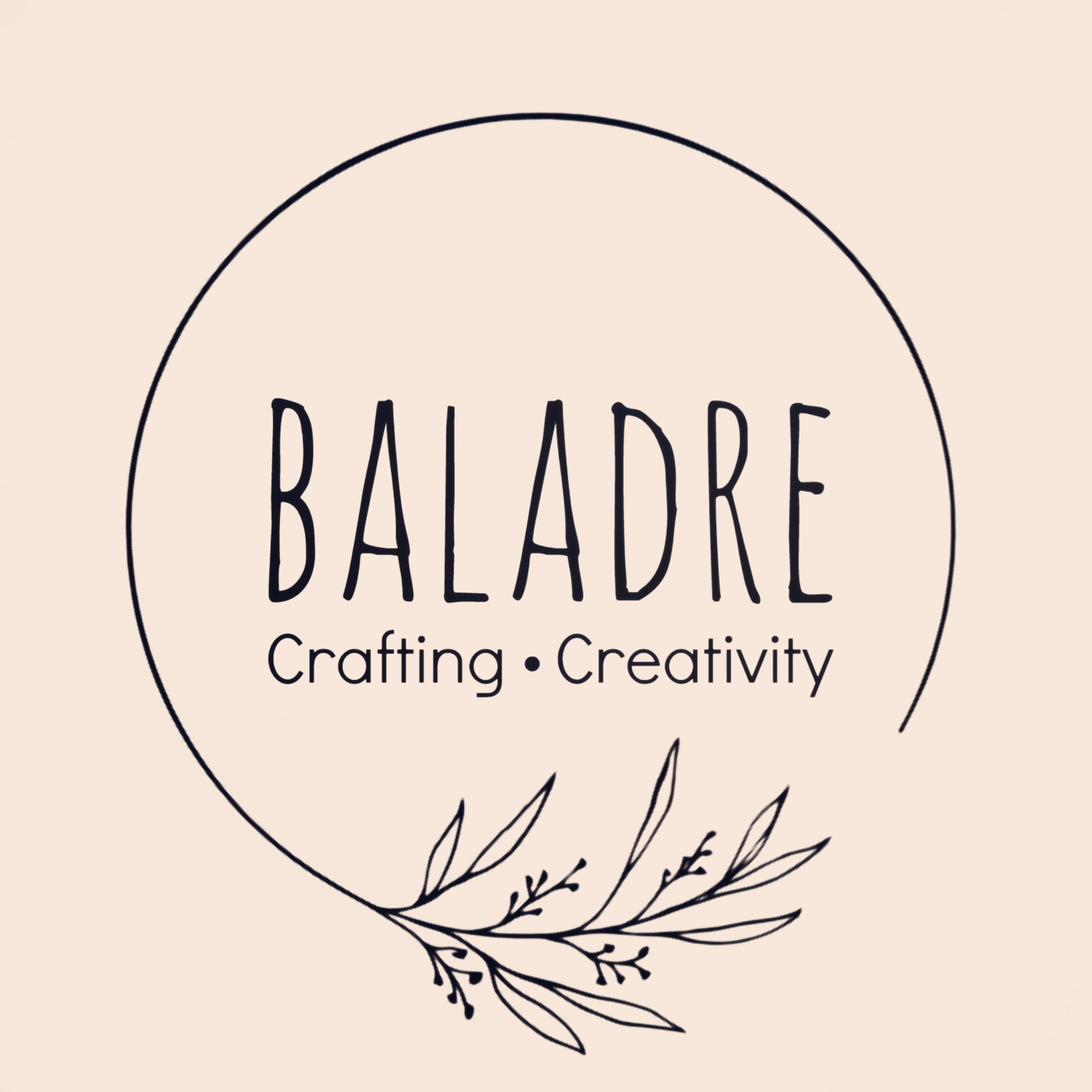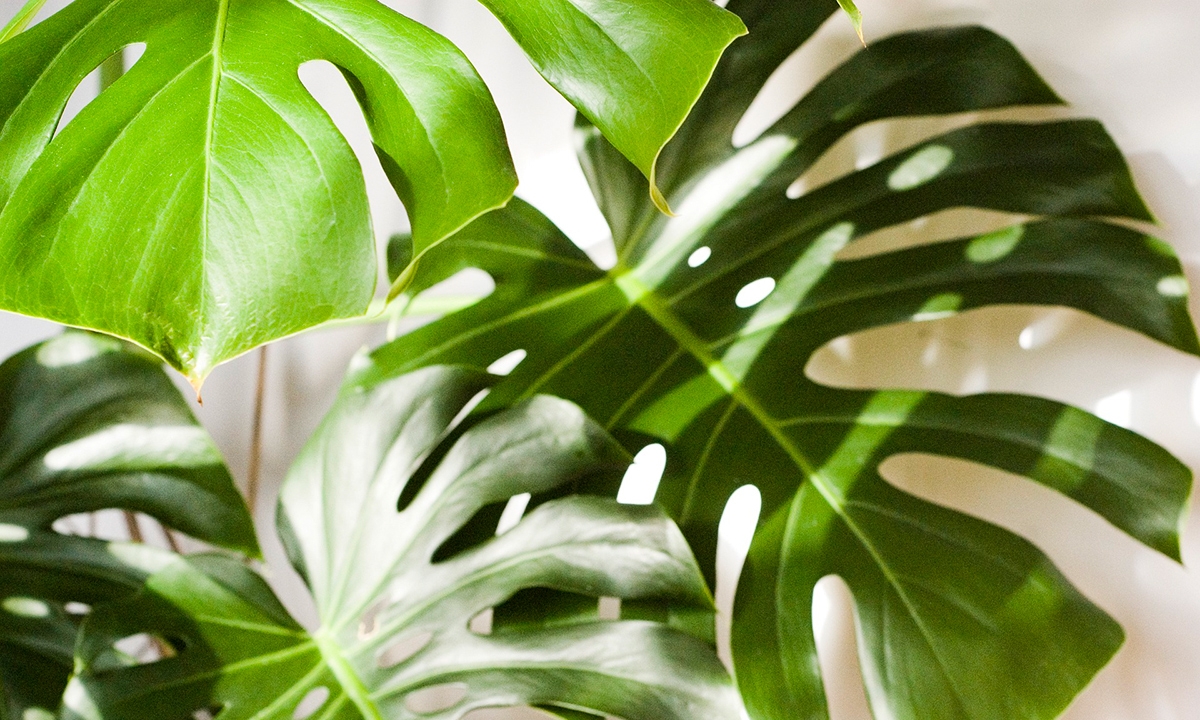Muds, botanicals for hair colouring
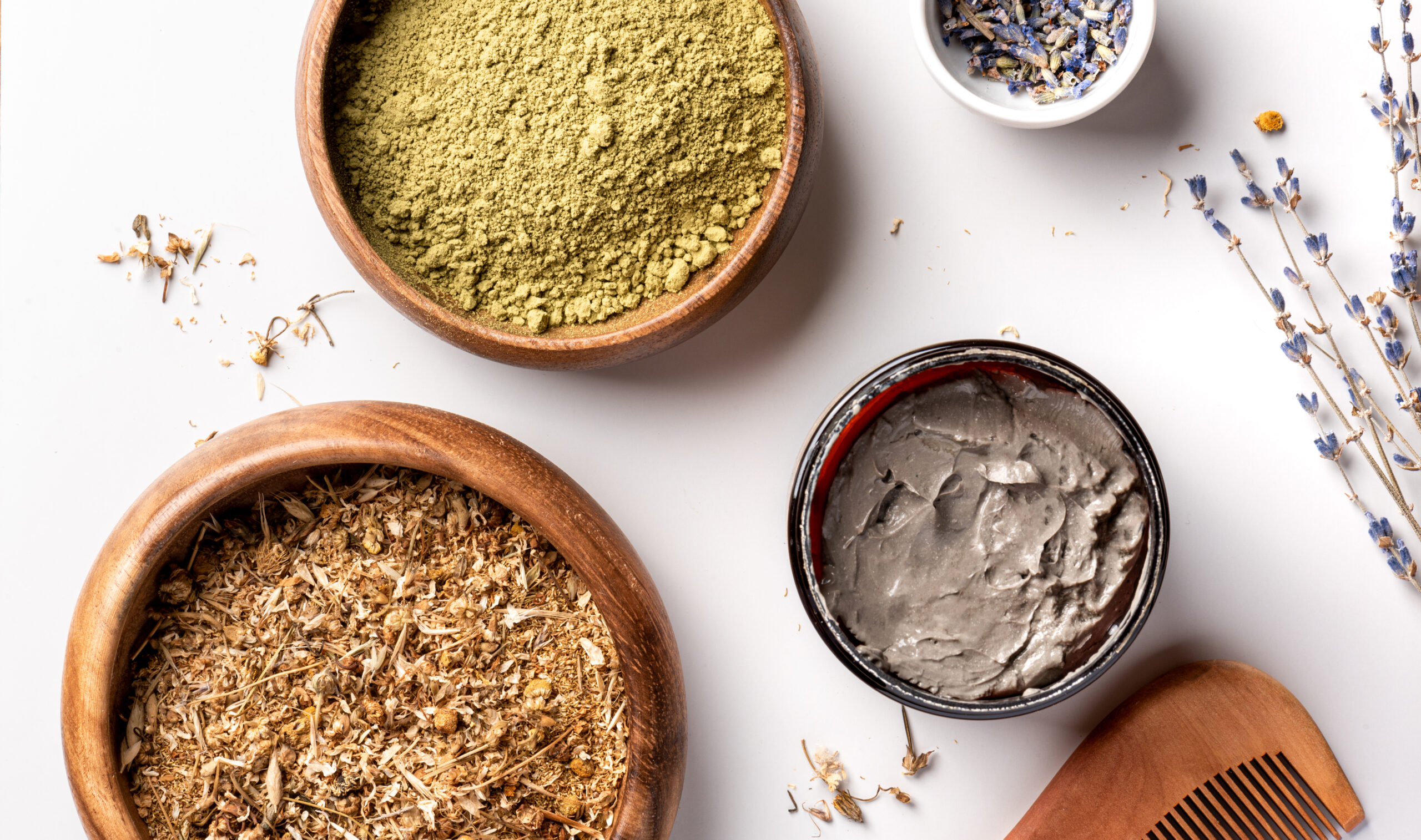
A technique that harnesses the power of dye plants to bring soft tones to our hair, with which we can fade the dreaded grey hair but also restore lost vitality and shine, thanks to the nutrients that accompany them. A new post on sustainable lifestyle and plants from our blogger Baladre.
There is a very vegetable hair dyeing technique that has been gaining importance and prominence in recent years, especially for those of us who are looking for an alternative to traditional chemical dyes. A very natural way of dyeing hair, commonly known as “muds”. It is a mixture of dyes, mostly vegetable, that camouflages grey hair without changing the tone of your hair by literally rubbing mud on your hair! Shall I tell you more?
As you already know, there are two options when it comes to dealing with grey hair when it starts to appear on our heads: to show it off naturally or to colour it with hair dyes. I, for the moment, am in the second group, and, if you have read some of my articles before, you will know that I always try to do things in the most ecofriendly and natural way possible. So, looking for an alternative to conventional hair dyes, to cover those grey hairs that are starting to show, I discovered barros. A fun, relaxing and creative practice that not only gives colour, but also nourishes and gives shine and volume to our hair.
What are muds?
They are 100% organic dyes composed of plant extracts (flowers, bark, leaves…) algae and soil, in short, pigments from nature. Their vegetable and mineral active ingredients respect the structure of the hair and do not contain harmful chemical elements in their composition that negatively affect the hair or scalp.
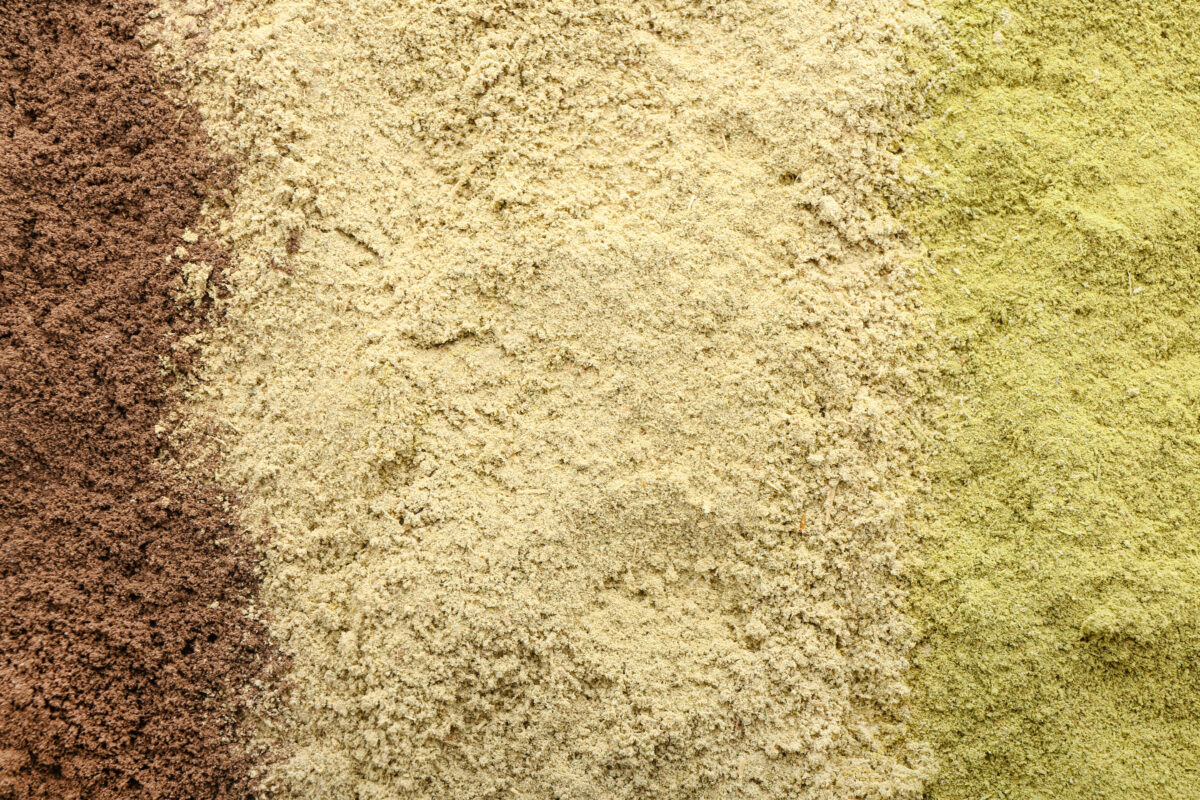
Mud dyes work by colouring the hair without oxidising or damaging it. Contrary to how conventional hair dyes normally work, which break the hair structure so that the colour penetrates and fixes itself inside, with muds the colouring remains externally, impregnating the cuticle of the hair follicle, the outermost layer where the keratin is found, which is transparent as it lacks pigmentation. And what’s more, the hair looks thicker, with more volume!
To the eye, they are very fine powders, which smell strong, like a mixture of tea and soil. They are activated by simply combining them with hot water and sometimes with oils to make them easier to apply. When mixed with water, they turn brownish in colour and take on a muddy texture, hence the name “mud”.
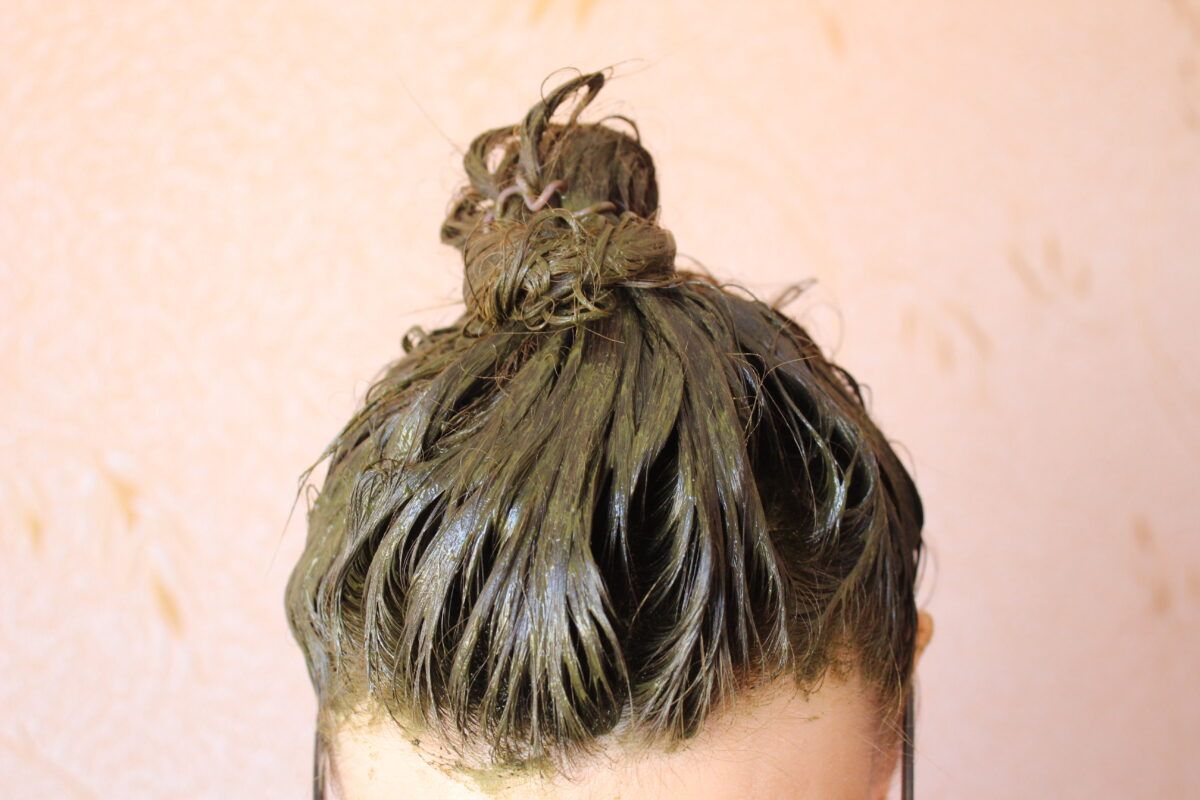
Once the mixture has been made, the hair strands are impregnated, from the roots to the ends. After 30-40 minutes of exposure, rinse thoroughly with water and that’s it. For more intense results, you can extend the exposure a little longer, wrap the hair with a towel, carefully expose it to a heat source or even repeat the whole process a second time.
As a curious fact, all the preparation and application should be done without metallic elements as this could lose effectiveness and/or alter the colour of the mixture. Therefore, the mixing bowls should be made of wood, stoneware, glass or plastic, as well as the mixing utensils or the tongs that hold the hair, where we will opt for wood or plastic.
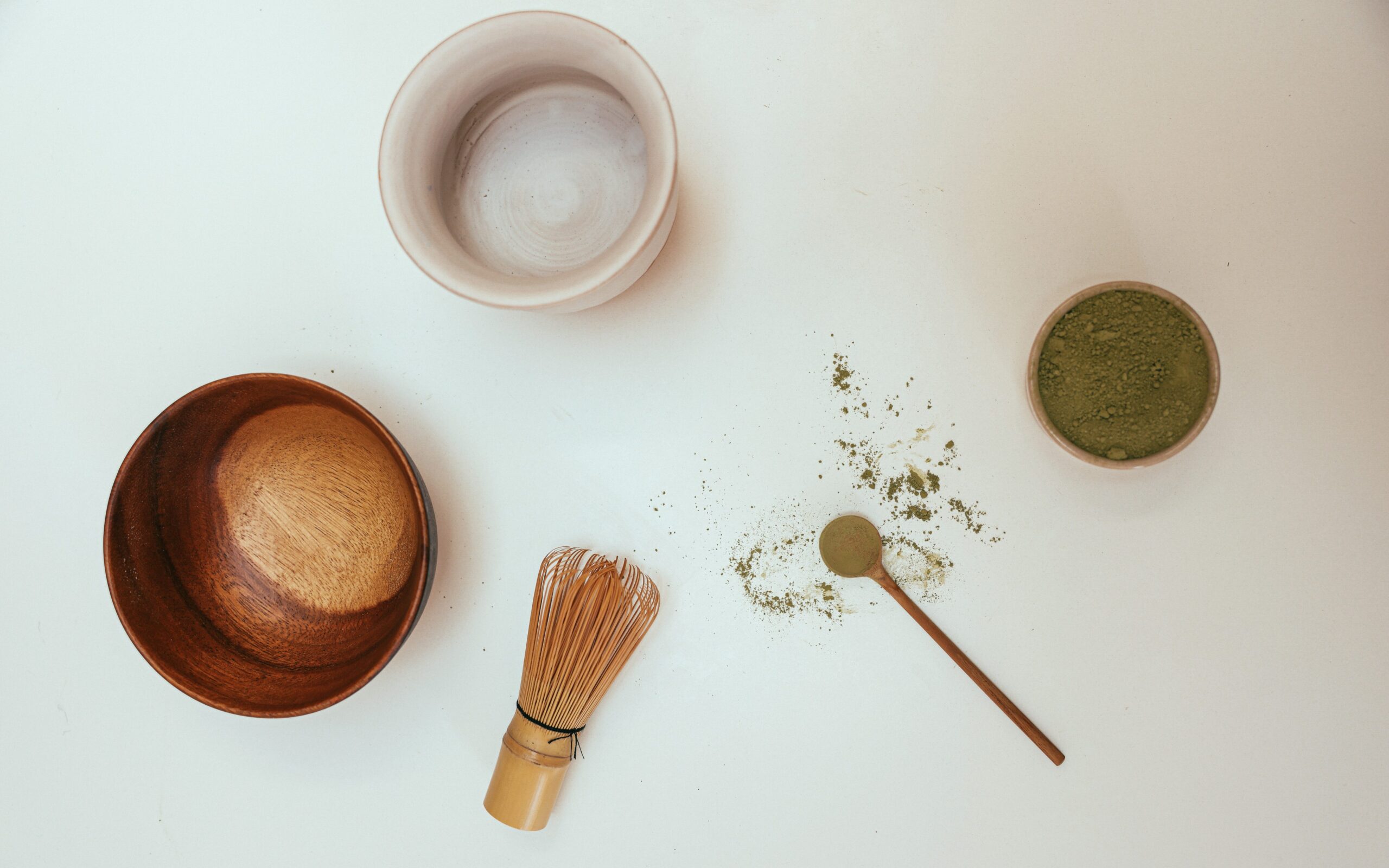
Do you think it’s a fad?
Discoveries from ancient civilisations and history have shown that the use of hair dyes extracted from nature has been used for thousands of years. The Egyptians, who took great care of their aesthetics, already used the famous henna (of vegetable origin) and kohl (of mineral origin). In fact, henna leaf powder has been found in the tombs of the Egyptian pharaohs. In India and Persia, henna was also used, and men mixed it with indigo to dye their beards.
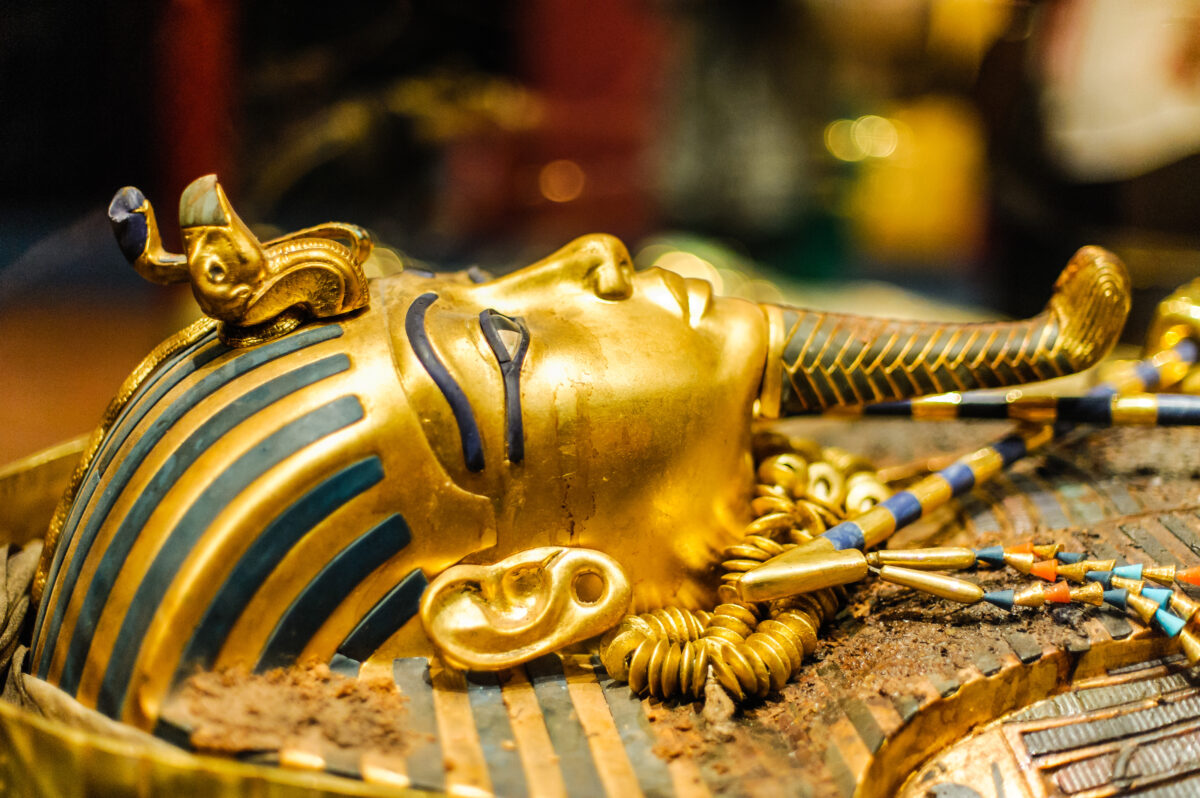
The ancient Greeks and Romans were no exception either. While the Greeks also opted for henna paste, the Romans began to use other ingredients such as walnut bark extract or black cork berries, among other natural products. In addition to dyeing hair, they could also use bleaching thanks to a kind of paste they made by mixing beech wood ashes and goat tallow. And there’s more: apart from vegetable elements, they used lead salts for the first time. This is unthinkable today because it is a highly toxic product.
In the Renaissance, the trend was to wear blonde hair, and bleaching to make hair lighter was achieved with natural soda and lots of sunlight. Once bleached, they could be dyed in different colours using vegetable elements. During this period, in France, brunettes applied violet powder and blondes iris powder. And in the Baroque, those iconic big wigs were also dyed using macerated plants or their ashes.

The “Darnley Portrait” of Elizabeth I, Queen of England. Image: wikipedia, public domain.
In 17th century England, many women coloured their hair red, in homage to Queen Elizabeth, who was an influencer at the time. These shades were achieved by soaking their hair in a solution of alum after a decoction of rhubarb.
However, if we talk about advances in hair dyeing, the 19th and 20th centuries were the most important, but they were also the years in which chemical products were most abused: hydrogen peroxide, silver nitrate, aniline, alcohol, ammonia… Thanks to them you could have a hundred different shades and completely cover grey hair, but at the price of having maltreated and malnourished hair. Nowadays, there are few hair dyes that contain ammonia, although they contain many other chemical agents in their composition that alter the health of our scalp and hair follicle.
Now, in the 21st century, in the midst of the green revolution, there is a desire to go back to nature, and that’s where the booming hair dyes come in!
Can they be used to cover grey hair?
Well, yes and no. I mean, it is true that they help to conceal grey hair, but not in the same way as a conventional hair dye. What really happens is that the mud provides a soft tone to all the hair, which is practically imperceptible in follicles with colour but that makes the grey hair to be disguised or blurred. The optical effect achieved is that of highlights or streaks.
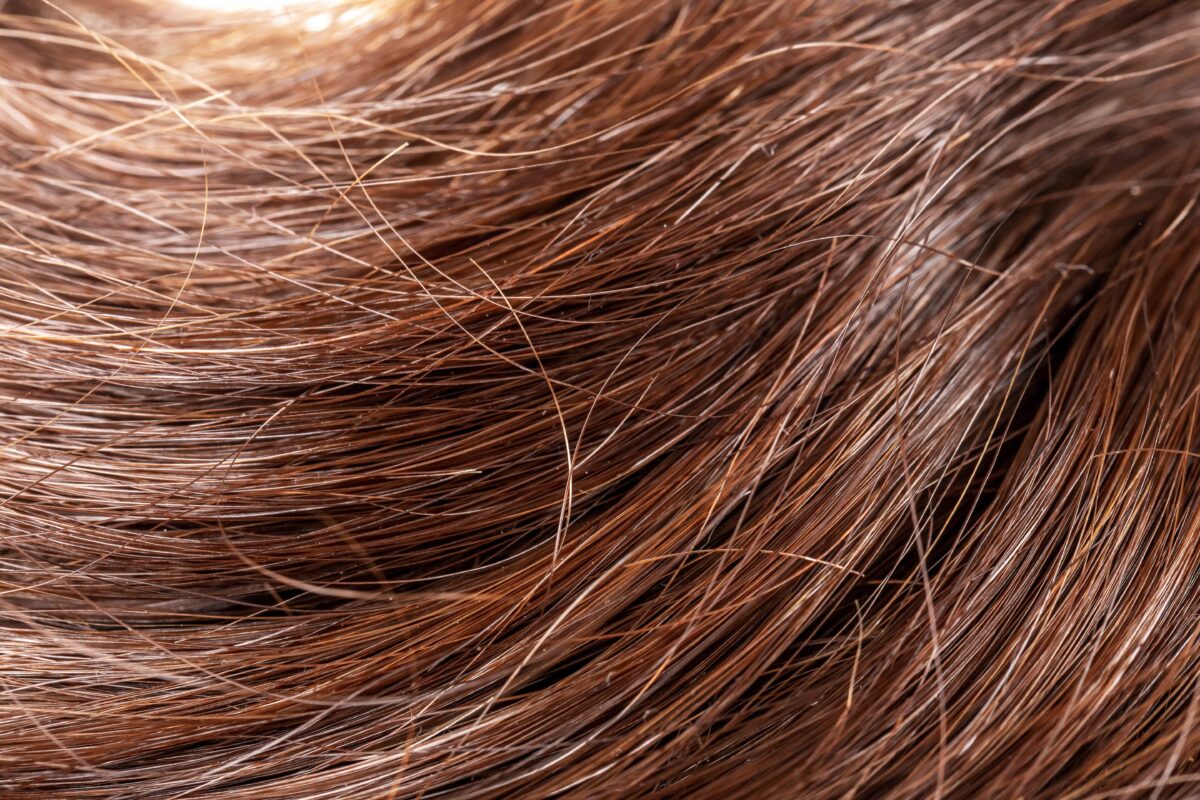
The best thing about it? It works differently on everyone. In fact, if you apply a spot colour, you won’t know what your grey hair will look like until you see the final result. And linked to this there is another added advantage, as the base tone is not altered, the root effect does not exist, as only the grey hairs are coloured and the tone is gradually and uniformly lost. And believe me, this was a big reason why I opted for this technique: not to be tied to a dye every 20 days to avoid this effect? Great!
More advantages of dyeing with mud:
– They improve hair health thanks to the active ingredients contained in the plants.
– They do not include aggressive chemical agents, abscence of sulphates or other ingredients that tend to cause irritation. In fact, they are very well tolerated by people with a tendency to allergies.
– They help to eliminate impurities, making your hair look radiant.
– They prevent hair loss, dandruff and excess oil.
– Restores natural shine.
– Hair does not deteriorate.
– Balances the pH of the scalp.
– Suitable for pregnant women.
– Can be applied to eyebrows and eyelashes.
– Made of biodegradable ingredients that do not pollute the planet.
And the disadvantages:
– The colouring is semi-permanent, the colour fades with washing.
– The results are not very intense and perhaps the coverage of grey hair in blonde shades is a little poor.
– The range of shades is limited and always in natural tones. If you are looking for colourings out of the ordinary (pinks, blues, violets…) this is not the treatment for you.
– It does not allow you to lighten or darken your hair colour by more than one tone. That is to say, if you are a brunette you cannot apply blonde clay, and vice versa. You have to choose the one that is one shade above or below your natural colour.
– Greenish tones may appear if you have previously applied chemical dyes or bleached your hair. In this case, it is best to start with the help of a professional to avoid this effect.
– The application can be a bit cumbersome, because if the mixture of powder and hot water is too fluid, it drips; and if it is too dry, it is difficult to apply.
Top 5 of the plants found in muds
In nature, there are various plants that contain active ingredients with colouring properties. These active ingredients, extracted by different techniques, are used to prepare vegetable hair dyes. Like most plants, each of them has many other uses, however, in this post we will focus on their properties for hair.
HENNA. Botanical species: Lawsonia inermis

Lawsonia inermis, henna. Image: freepik.es
Description: White henna, henné or henna is a shrub native to northeastern tropical Africa, the Arabian Peninsula and southern Pakistan to India, although it is naturalised in other regions of the world, within the subtropical to equatorial margin. It has whitish bark, slender branches, pale green lanceolate leaves and yellowish-white, sour-smelling flowers, gathered in terminal panicles.
Part used: Leaves.
Active colouring principle: lawsone, the chemical structure of which corresponds to a naphthoquinone. The content of the leaves is approximately 5%. They also contain tannins (8%), which facilitate the fixing of the dye and give a certain body or consistency to the hair, as well as resin (2-3%), sugars, lipids, etc.
Lawsone is a colouring molecule that has a special affinity for keratin. When it interacts with the hair’s natural keratin (present in the hair cuticle), it reacts chemically and gives rise to the colour so characteristic of henna, the intense copper.
Unlike neutral henna (Cassia obovata) which repairs damaged hair, lawsone reacts better on healthy hair with a lot of keratin. So, depending on the condition of your hair, the dyeing will be more or less intense.
Preparation: The leaves are dried and crushed to obtain a yellow-greenish powder.
Shade: Auburn and reddish colours for brown hair, and orange colour for blond hair.
Benefits: Provides minerals to the hair, nourishes it deeply and gives it shine and volume.
Side note: Do not confuse the names, as the henna used for bark is totally vegetable and of natural origin, while the compound henna is a vegetable-metallic dye.
NEUTRAL OR COLOURLESS HENNA. Botanical species: Cassia obovata or Senna italica
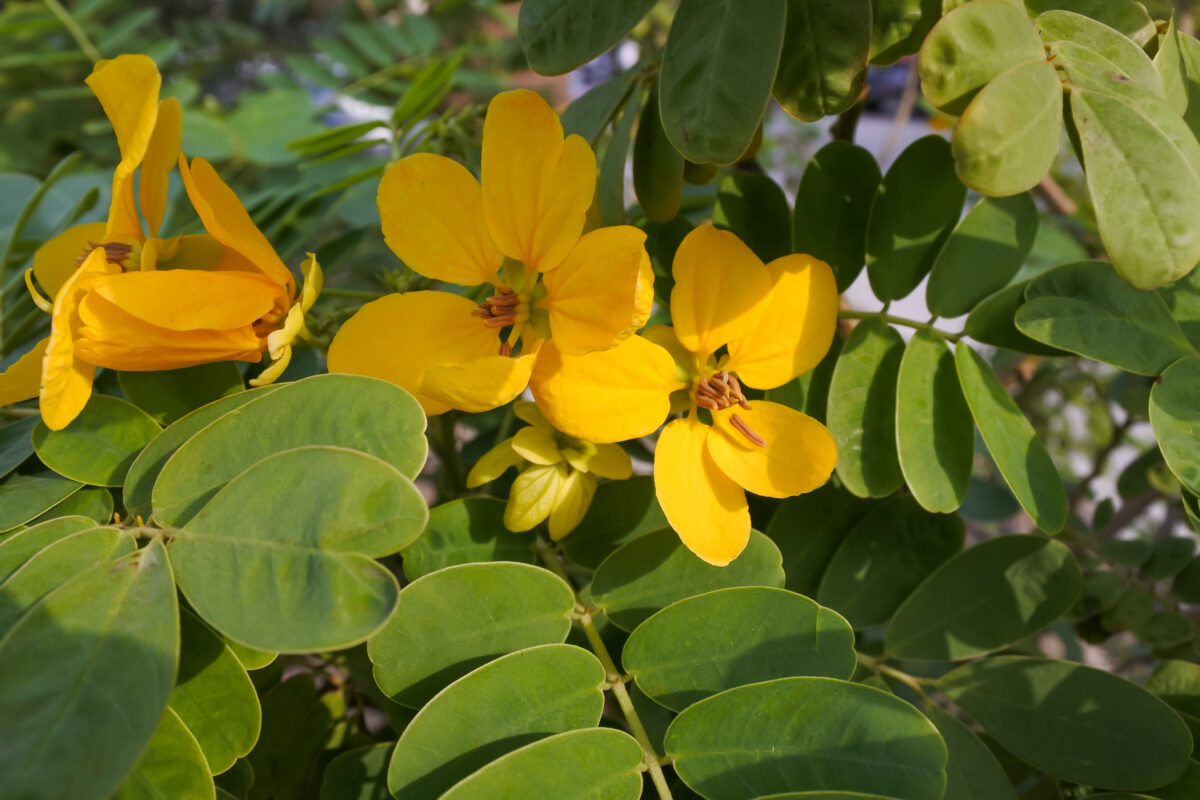
Senna italica. Image: Deb_NSWP, adobe stock
Description: Shrub of the legume family, reaching 60 cm in height, with an erect, cylindrical, branched, whitish trunk and compound leaves with 4 to 6 elliptical leaflets. Its inflorescences, in the form of clusters, bear numerous yellow flowers that darken as they dry. It flowers from June onwards. Called ‘senna of Spain or senna of Italy’, it is not native to the peninsula, but comes from intertropical Africa, but it is known as such because its cultivation was widespread in our country and in Italy during the Middle Ages. On the African continent it is naturalised as far as South Africa and, in South Asia, from the Middle East to India.
Part used: Leaves.
Active principles: Anthraquinones, dianthrone glycosides (5%), flavonoids, mucilages, malic and tartaric acids. And in smaller quantities tannins and resins.
Preparation: The leaves are dried and crushed, obtaining a yellowish powder.
Shade: It is an Ayurvedic herb that does not dye. Well, to be fair, it does leave a very loose golden pigment, which on dark hair is unnoticeable.
Benefits: Imagine you are in a TV advert and read the following. “It is a natural treatment that is used like a mask and as a result creates a protective layer that covers the entire hair cuticle, giving a dazzling glossy effect. So you can apply it from time to time to give your hair a nice boost of gloss and shine, whether you want to colour your hair or not.
Senna is considered one of the best natural hair conditioners. It is used to strengthen, regenerate and prevent hair loss, in short, to restore hair vitality. It also balances the pH of the scalp, has astringent and antiseptic properties, repairs the hair cuticle and prevents dandruff. If you have problems with hair loss, sad or lacklustre hair, this plant coats and protects the hair cuticle, strengthening it, making it look fuller and, at the same time, enhancing your natural hair colour.
INDIGO. Botanical species: Indigofera tinctoria
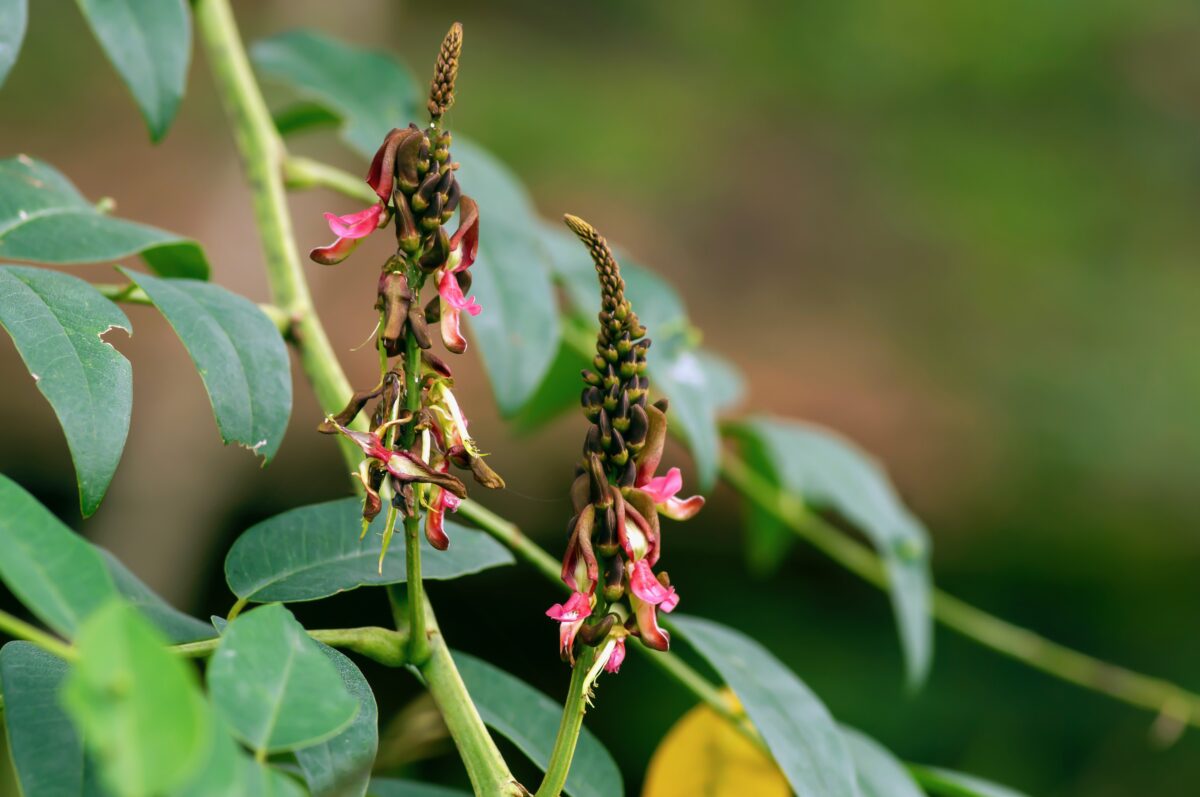
Indigofera tinctoria. Image: jakasuryanta, freepik.es
Description: A plant of the legume family native to tropical West Africa from Tanzania to southern Africa, and in Asia from the Indian subcontinent to Indochina. A shrub that can reach 2 m in height, with light green, imparipinnate, opposite compound leaves and inflorescences with purple bell-shaped flowers.
Part used: Leaves.
Active substance: indigotine and indigoferin (indigoids)
Preparation: The active ingredient is a blue-green powder which is mixed with henna and applied as a poultice.
Shade: Indigo can give light blues ranging from a pale sky tone to a deep navy blue almost black. And if it is pure it smells like a mixture of fruit and manure.
From the 19th to the mid-20th century it was one of the most popular dyes for dying hair black. It was known as “black henna”, because when mixed with henna and applied to the hair, it gives it a deep and very lush black colour.
Benefits: Regular use of indigo can prevent premature greying of hair. It also stimulates hair growth, improves hair colour and shine and provides a fresh feeling.
CHAMOMILE. Botanical species: mainly Roman chamomile is used (Anthemis nobilis) although German chamomile is also used (Matricaria chamomilla).

Anthemis nobilis. Image: barmalini, adobe stock
Description: Perennial herbaceous plant of the Asteraceae family, with a very branched and creeping stem, in inflorescences in flower heads generally formed by radial ligulate flowers of white colour and disc-shaped flowers with yellow corolla in the centre. The leaves are alternate and highly segmented. It flowers in spring and summer, and is native to Europe, where it is easily found in meadows and around gardens and cultivated land.
Part used: Flowers.
Active principle: Apigenin, with a polyphenolic structure.
Preparation: Cook the flowers in boiling water. Poultice of crushed flowers mixed with kaolin.
Shade: Yellowish-golden. When applied repeatedly, it has a lightening effect.
Benefits: Maintains and enhances colour in blonde hair, soothes sensitive scalps, adds shine and tones grey hair. Recommended for light hair, dull hair, sensitive scalps. Strengthens hair, restores elasticity and shine.
WALNUT. Botanical species: Juglans regia
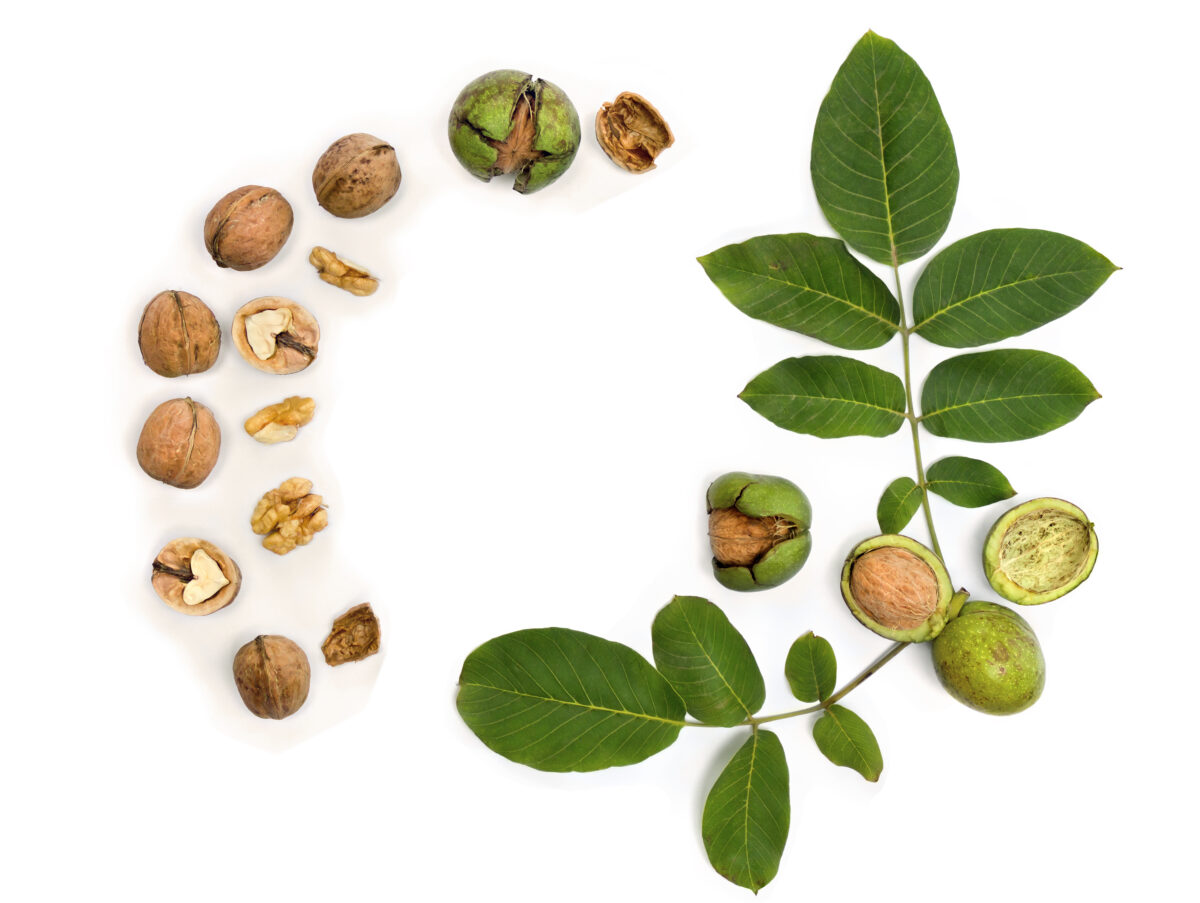
Juglans regia, walnut tree. Image: adobe stock
Description: Fruit tree belonging to the juglandaceae family and of controversial origin. It reaches 25 to 30 m in height and has a broad crown that casts dense shade under its canopy. Its bark is silvery grey and cracked longitudinally, and its leaves are deciduous, alternate and composed of 5 to 9 leaflets, always imparipinnate, oval and with an entire margin. The female flowers go more unnoticed as they are not very apparent, but the male flowers are showier and are arranged on long hanging stalks called catkins, to facilitate the dispersion of pollen by the wind. The fruit, the nut, is enveloped in a fleshy, green covering which dries out when ripe and takes on a brown or purple hue.
Part used: Leaves, bark and shell of the fruit.
Active ingredient: Juglone, naphthoquinone structure. It is present in 0.15% of the dried bark. Also contains lawsone1. Natural naphthoquinones (juglone), tannins present in its leaves and polyphenols react with hair protein by slightly pigmenting it in dark tones.
Preparation: In the form of cooking the active parts in boiling water, as well as in the form of a poultice. It is often used mixed with henna powder.
Shade: Brown. Mixed with Henna, brown and darker tones are achieved.
Benefits: Helps prevent hair loss due to its high content of L-arginine, an amino acid that helps scalp circulation and strengthens the roots. Applied as a mask, it enhances shine, strengthens hair and protects against hair loss.
Other species
Tea (Camellia sinensis) is used to modify the reflections produced by the previous species, while coffee darkens the final shade of the treatment. Cornflower (Centaurea cyanus) gives grey and white hair a bluish reflection, and is therefore very popular for covering unsightly yellowing of grey hair, and with rhubarb root (Rehum Officinale), an infusion is prepared that gives a golden hue to the hair.
Winning combinations
Now that you know what shade each plant gives off, you can find out which combinations suit which hair. I’m sure you agree that:
– In brown tones: henna + senna – In coppery brown tones: henna + camomile – For dark copper tones: walnut + henna – For light blond tones: camomile + senna
My experience
I have been using mud for about 3 years, and now I apply it at home. I started going every 6 months to a hairdresser’s specialised in muds. The truth is that I liked seeing how they prepared the mixture in front of me, and also the application method is so different from conventional dyes, that it makes the experience more organic. Highly recommended, you leave the salon as if you’ve just come from a spa!

I’ve been applying them at home for a year now, if you want to give it a try I recommend you find a morning or afternoon when you have nothing to do. The times are often longer, and what you thought would last between 1 or 2 hours, can take a little longer, especially if you want to enhance the colour by repeating the process.
The result is always different, especially regarding the grey hair coverage, it depends a lot on the exposure time and the type of shampoo you use before the application.
With this post I wanted to show all the pros and cons that I faced when I decided to dye my hair only with natural products. As well as listing the plants most present in the compositions of the muds, so that you know what fantastic benefits they bring to the hair.
If you try it, at the very least you will be giving your hair an extra supply of nutrients that will leave it healthier and more beautiful than it was, that’s for sure. Magic? No, this is science, the science of nature.






